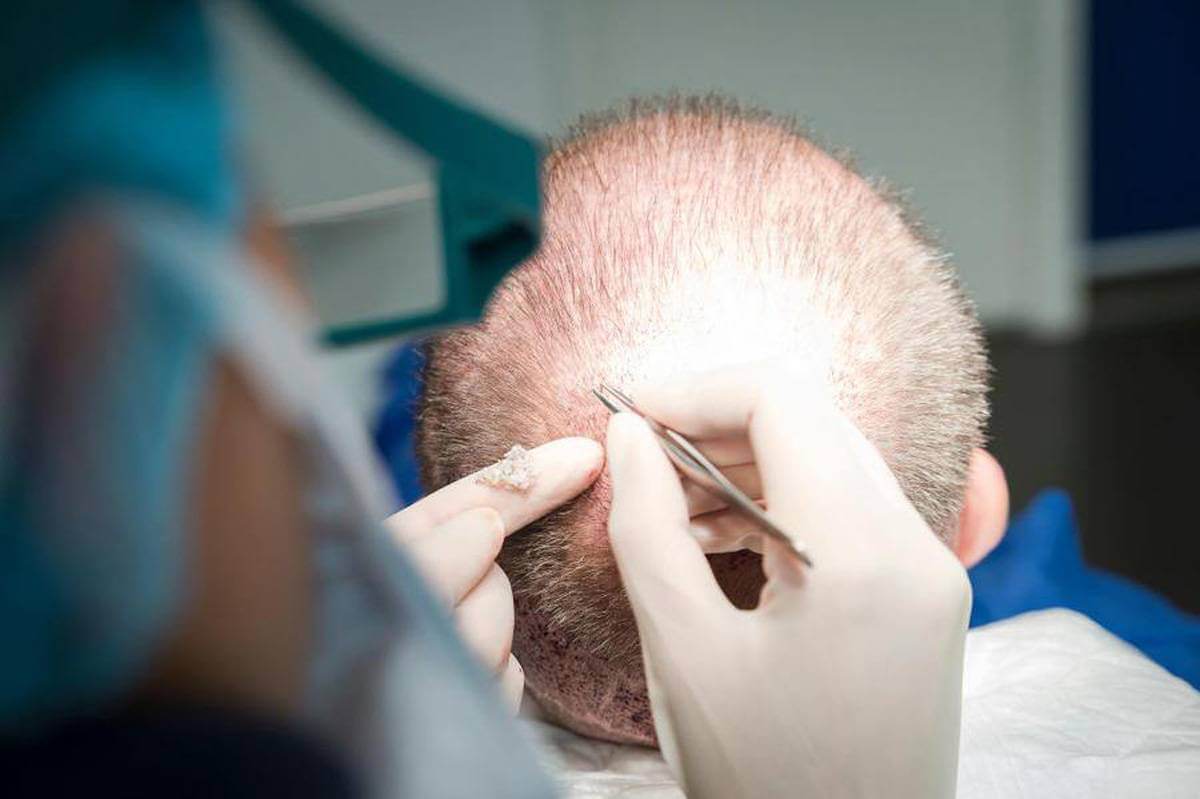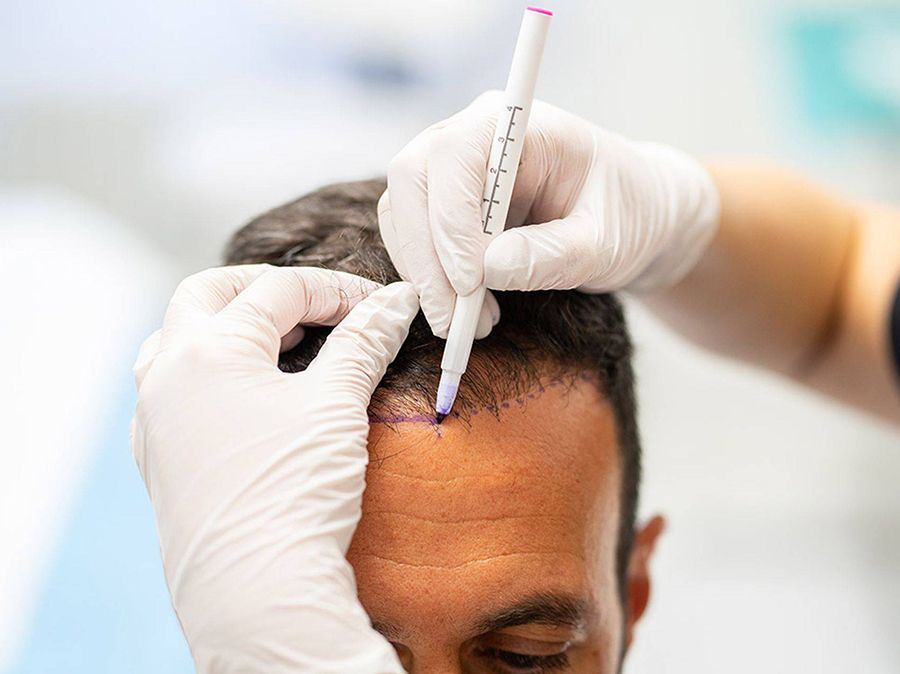Are you considering a hair transplant, but feeling overwhelmed by the number of surgeons and clinics offering this procedure? It’s important to remember that not all hair transplant providers are created equal. Choosing the right surgeon can mean the difference between natural-looking results and a botched surgery. In this blog post, we’ll explore why it’s crucial to choose the right surgeon for your hair transplant and how to go about finding one who meets your needs. Don’t take any chances with something as important as your appearance – read on to learn more!
Table of Contents
What is Hair Transplantation?
Hair transplantation is a surgical procedure that involves taking hair from one area of the scalp and transplanted to another area. The most common reason for hair transplantation is to treat male pattern baldness. However, it can also be used to restore eyebrows, eyelashes, beard hair, and public hair. It is important to choose a surgeon who is experienced in performing this type of surgery.
What to Look for When Choosing a Surgeon
When it comes to choosing a surgeon for your hair transplant, there are a few things you should keep in mind. First and foremost, you want to make sure that the surgeon is experienced and qualified. The best way to do this is to look for reviews from past patients.
You also want to make sure that the surgeon is using the latest techniques and technology. This will help to ensure that your surgery is as successful as possible.
Finally, you want to make sure that the surgeon you choose is someone you feel comfortable with. You should be able to ask questions and get answers without feeling pressured. If you don’t feel comfortable with the surgeon, it’s likely that you won’t have a good experience with them.
Benefits of Hair Transplantation
Hair transplantation can offer many benefits, including a natural-looking hairline, increased self-confidence, and the ability to style your hair the way you want. The procedure can also be used to correct previous hair transplant surgery that did not meet your expectations.
Choosing the right surgeon is essential to achieving these benefits. A skilled and experienced surgeon will be able to create a natural-looking hairline that complements your facial features. They will also be able to minimize the risk of complications and ensure that you are satisfied with your results.
Types of Hair Transplantation Procedures
There are two main types of hair transplant procedures that are commonly performed: follicular unit transplantation (FUT) and follicular unit extraction (FUE).
FUT is the traditional hair transplant procedure. In this procedure, a strip of skin containing hair follicles is removed from the back or sides of the head. The hair follicles are then transplanted to the balding area of the head. FUT can provide a large number of grafts in a single session, which can be helpful for people who have extensive hair loss. However, this procedure can also result in a linear scar on the back or sides of the head.
FUE is a newer hair transplant procedure that does not involve removing a strip of skin from the donor area. Instead, individual hair follicles are extracted from the donor area and transplanted to the balding area. This results in minimal scarring and allows for a quicker recovery time. However, FUE is more expensive than FUT and often requires multiple sessions to achieve desired results.
 Risks and Complications Involved with Hair Transplantation
Risks and Complications Involved with Hair Transplantation
Hair transplantation is a surgical procedure that involves taking hair from one area of the head and transplanted to another area. The risks and complications involved with hair transplantation include:
-Infection: There is a risk of infection at the donor site and the recipient site. The risk of infection can be minimized by choosing a reputable surgeon who uses sterile techniques.
-Bleeding: Bleeding is a commonwith any surgery. The risk of bleeding can be minimized by choosing a reputable surgeon who has experience with hair transplantation.
– Scarring: There is a risk of scarring at the donor site and the recipient site. The risk of scarring can be minimized by choosing a reputable surgeon who uses sterile techniques.
-Numbness: There is a risk of numbness at the donor site and the recipient site. The risk of can be minimized by choosing a reputable surgeon who has experience with hair transplantation.
Aftercare Tips for a Successful Hair Transplantation
Aftercare following a hair transplant is critical to the success of the surgery. Here are some aftercare tips to ensure a successful hair transplant:
1. Keep your head elevated for the first few days following surgery. This will help reduce swelling and promote healing.
2. Apply ice packs to your head for 20 minutes at a time, several times a day, for the first few days following surgery. This will also help reduce swelling.
3. Follow all of your surgeon’s instructions regarding wound care, shampooing, and activity level.
4. Avoid sun and wear a hat or scarf when for the first few weeks following surgery.
5. Be patient! It can take several months for new hair growth to appear.
Alternatives to Hair Transplantation
There are a number of alternatives to , all of which have their own advantages and disadvantages.
Hair plugs are one alternative to . Hair plugs are small clusters of hair that are transplanted into the scalp. One advantage of hair plugs is that they can be done in a single session. However, a of hair plugs is that they can give the appearance of a doll’s head, as the hair plugs are often not evenly distributed.
Another alternative to is scalp reduction surgery. Scalp reduction surgery involves removing a section of bald scalp and stretching the remaining skin to cover the area. One advantage of scalp reduction surgery is that it can provide a more result than hair plugs. However, a disadvantage of scalp reduction surgery is that it can leave a scar on the scalp.
A third alternative to hair transplantation is tissue expansion. Tissue placing an inflatable balloon under the skin and gradually inflating it over time. One advantage of tissue expansion is that it can create more space for follicular unit extraction (FUE) surgery. However, a of tissue expansion is that it requires multiple surgical sessions and can be quite painful.
Conclusion
Choosing the right surgeon for your hair transplant is a crucial decision that should not be taken lightly. With the right doctor, you can ensure that you are getting the best care and results possible. When searching for a surgeon, make sure to do your research and take into consideration all of their, experience and reviews from previous patients. By doing so, you will be able to find a qualified professional who can help provide you with results without any or side effects.


